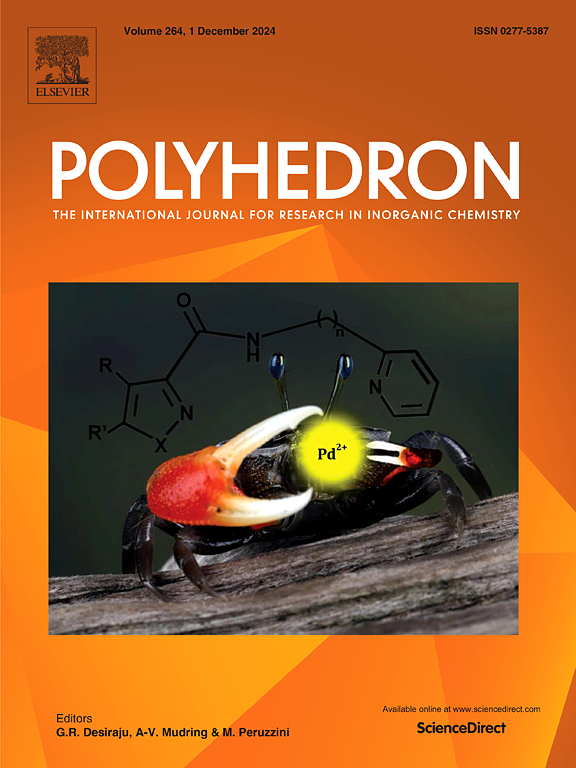Dysprosium complex with 1,10-phenanthroline-5,6-dione: Synthesis, structure, DNA binding profile, and in vitro cytotoxic evaluation against HT29 cancer cell lines
IF 2.4
3区 化学
Q2 CHEMISTRY, INORGANIC & NUCLEAR
引用次数: 0
Abstract
The study investigates the interactions between a dysprosium(III) complex containing 1,10-phenanthroline-5,6-dione (Dy(phen-dion)3) and deoxyribonucleic acid (DNA), utilizing a range of analytical techniques. These methods include cyclic voltammetry (CV), UV–Vis spectroscopy, Fourier transform infrared (FT-IR) spectroscopy, electrophoresis, fluorescence spectrophotometry, and molecular docking calculations. The findings reveal compelling evidence of significant binding between Dy(phen-dion)3 and DNA. The binding affinity of Dy(phen-dion)3 to DNA was quantified, yielding a high binding constant (Kb) of 3 × 105 M−1. Additionally, fluorescence resonance energy transfer experiments indicated efficient energy transfer between DNA as the donor and Dy(phen-dion)3 as the acceptor, suggesting close proximity between the two entities. The quenching constant (KSV) obtained for this complex was 1.94 × 10−3 M−1. Electrochemical measurements suggest a groove-binding mode for the complex with DNA, characterized by a 1:1 binding ratio. The interaction is likely facilitated by hydrogen bonding and van der Waals forces, which play crucial roles in stabilizing the complex. Moreover, the in vitro antitumor activity of Dy(phen-dion)3 was assessed using the MTT assay on HT29 cells. The results showed that with the increase in the concentration of Dy(phen-dion)3, the resistance of HT29 cancer cells to the anticancer drug methotrexate (MTX) increased at a concentration of 10.16 μg mL−1, highlighting the potential of the complex as an effective therapeutic agent in the treatment of colorectal cancer.

求助全文
约1分钟内获得全文
求助全文
来源期刊

Polyhedron
化学-晶体学
CiteScore
4.90
自引率
7.70%
发文量
515
审稿时长
2 months
期刊介绍:
Polyhedron publishes original, fundamental, experimental and theoretical work of the highest quality in all the major areas of inorganic chemistry. This includes synthetic chemistry, coordination chemistry, organometallic chemistry, bioinorganic chemistry, and solid-state and materials chemistry.
Papers should be significant pieces of work, and all new compounds must be appropriately characterized. The inclusion of single-crystal X-ray structural data is strongly encouraged, but papers reporting only the X-ray structure determination of a single compound will usually not be considered. Papers on solid-state or materials chemistry will be expected to have a significant molecular chemistry component (such as the synthesis and characterization of the molecular precursors and/or a systematic study of the use of different precursors or reaction conditions) or demonstrate a cutting-edge application (for example inorganic materials for energy applications). Papers dealing only with stability constants are not considered.
 求助内容:
求助内容: 应助结果提醒方式:
应助结果提醒方式:


